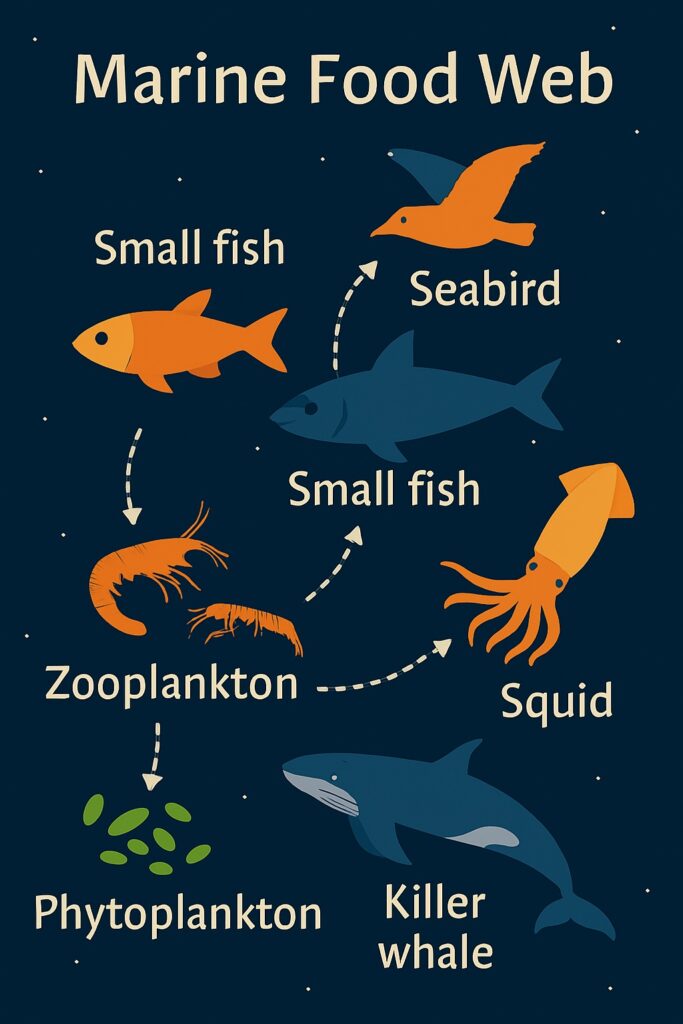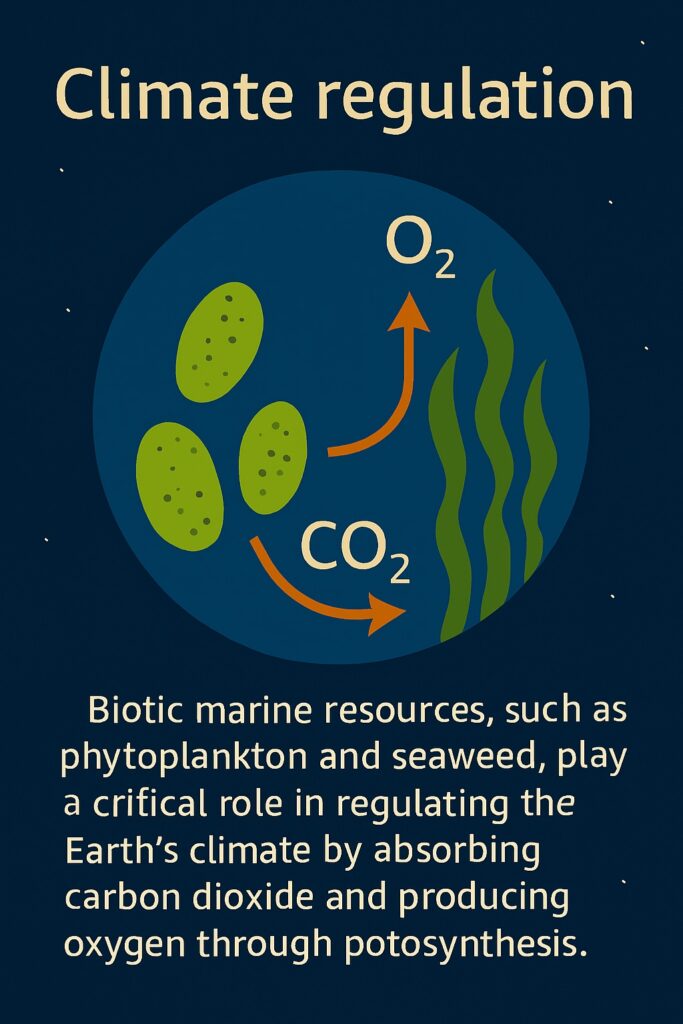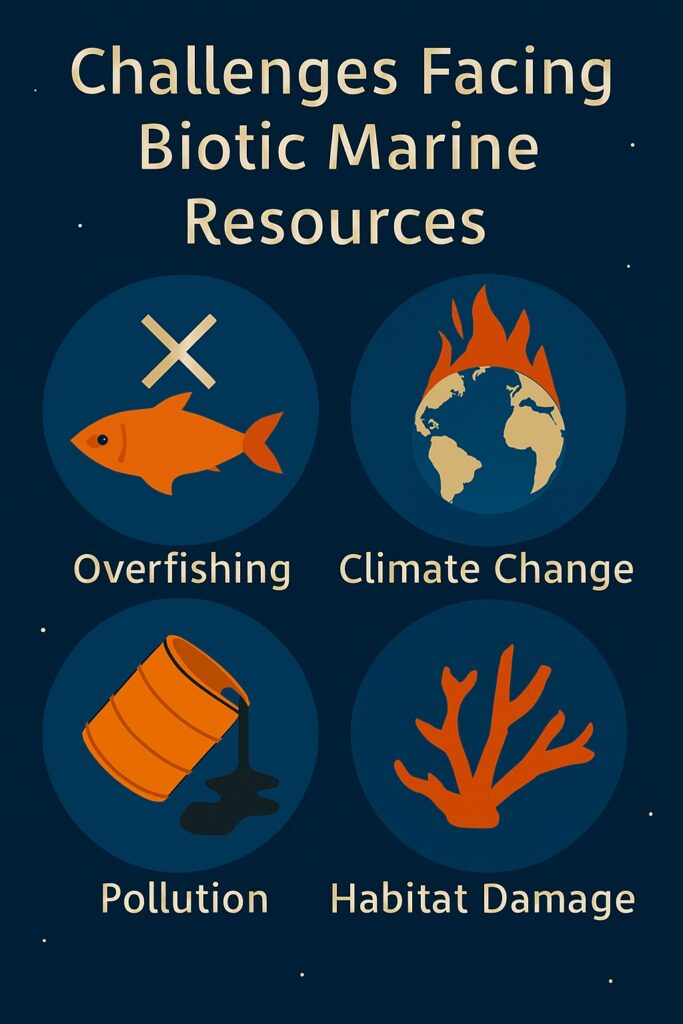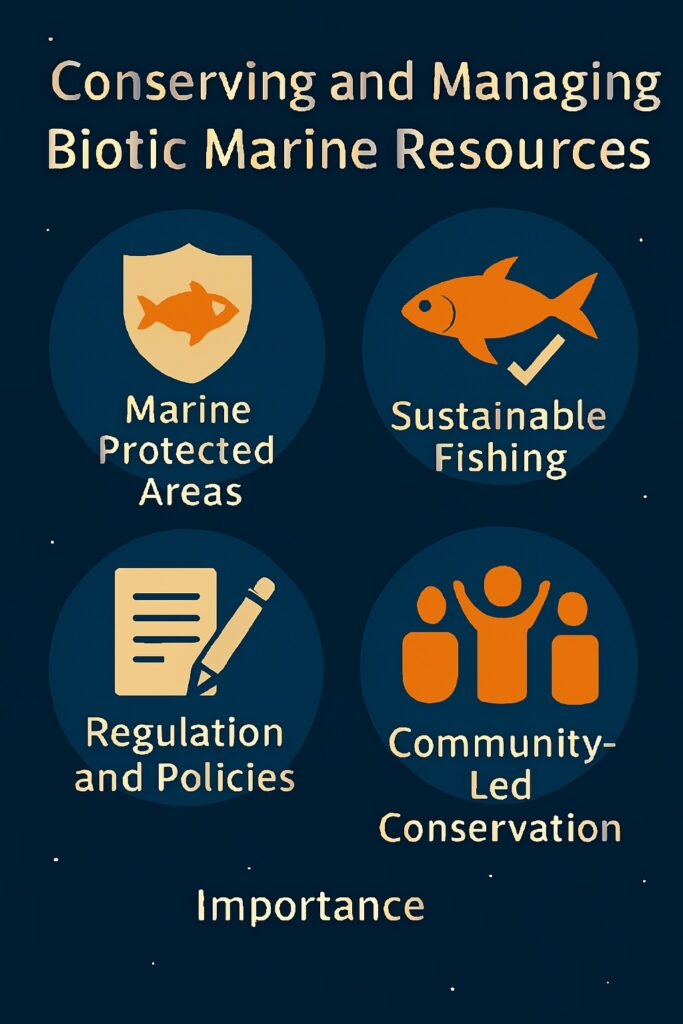Biotic Marine Resources refer to the living organisms found within oceanic and coastal environments that contribute to ecological balance and human sustenance. These resources include a wide variety of plants, animals, and microorganisms that serve economic, and ecological functions.

Table of Contents
What are Biotic Marine Resources?
Biotic marine resources are the living resources found in the ocean, including fish, shellfish, seaweed, and other forms of marine life. These resources provide a source of food, income, and livelihood for millions of people around the world and play a critical role in the ocean’s ecosystem by providing habitat and serving as a source of food for other marine species.

Types of Biotic Marine Resources
There are many different types of biotic marine resources, each with its own unique characteristics and importance. Some of the most important types of biotic marine resources are:
- Finfish: Finfish are the most valuable type of biotic marine resource, providing a source of food and income for millions of people around the world. Examples of finfish include tuna, salmon, cod, and halibut.
- Shellfish: Shellfish, such as clams, mussels, and oysters, are a valuable source of food and provide important habitat for other marine species.
- Seaweed: Seaweed, including kelp and nori, is a valuable source of food, fertilizer, and bioactive compounds used in the pharmaceutical and cosmetic industries.
- Marine mammals: Marine mammals, such as whales, seals, and dolphins, play an important role in the ocean’s ecosystem and are a source of food for some human communities.
- Marine birds: Marine birds, such as seabirds and shorebirds, play an important role in the ocean’s food chain and serve as indicators of the health of the marine environment.
Importance
Biotic marine resources are an essential component of the ocean’s ecosystem and play a critical role in supporting human communities around the world.

Some of the key benefits and importance of biotic marine resources are:
- Food security: Biotic marine resources provide a vital source of food for millions of people around the world, helping to ensure food security for coastal communities and contributing to global food production.
- Economic value: Biotic marine resources are a valuable source of income for many communities, providing jobs and supporting local economies through fishing, aquaculture, and other activities.
- Ecosystem services: Biotic marine resources play a crucial role in the ocean’s ecosystem, providing habitat and serving as a source of food for other marine species.
- Climate regulation: Biotic marine resources, such as phytoplankton and seaweed, play a critical role in regulating the Earth’s climate by absorbing carbon dioxide and producing oxygen through photosynthesis.

Challenges
Despite their importance, biotic marine resources are facing a number of challenges that threaten their sustainability and continued availability.

Some of the key challenges facing biotic marine resources are:
- Overfishing: Overfishing is one of the biggest challenges facing biotic marine resources, as the increasing demand for seafood is putting pressure on fish populations and destroying critical habitats.
- Climate change: Climate change is having a major impact on biotic marine resources, as rising temperatures, ocean acidification, and changes in ocean currents are altering the distribution and abundance of marine life and threatening their survival.
- Pollution: Pollution, including plastic pollution and oil spills, is a major threat to biotic marine resources, as it can cause harm to marine life and destroy critical habitats.
- Habitat destruction: Human activities, such as coastal development and the destruction of wetlands and mangroves, are destroying critical habitats for biotic marine resources, reducing their populations and threatening their survival.
- Invasive species: Invasive species, such as the lionfish, are a major threat to biotic marine resources, as they can outcompete native species and disrupt the delicate balance of the ocean’s ecosystem.
- Aquaculture practices: Aquaculture practices, while important for increasing food production, can also have negative impacts on biotic marine resources, such as the spread of disease and the destruction of critical habitats.
- Conserving and Managing Biotic Marine Resources
Conservation
To ensure the sustainability and continued availability of biotic marine resources, it is critical that we take steps to conserve and manage these resources.

Some of the key strategies for conserving and managing biotic marine resources are:
- Implementing sustainable fishing practices: To conserve and manage fish populations, it is important to implement sustainable fishing practices, such as fishing quotas, marine protected areas, and responsible aquaculture practices.
- Reducing marine pollution: To protect biotic marine resources from pollution, it is critical to reduce marine pollution through efforts such as reducing plastic use and increasing recycling, as well as implementing policies to prevent oil spills and other sources of marine pollution.
- Protecting critical habitats: To conserve biotic marine resources, it is important to protect critical habitats, such as wetlands and mangroves, through conservation efforts and policies to reduce habitat destruction.
- Managing invasive species: To reduce the impacts of invasive species on biotic marine resources, it is important to implement management strategies, such as the control and removal of invasive species, as well as efforts to prevent the introduction of new species.
- Supporting research and monitoring: To effectively conserve and manage biotic marine resources, it is critical to support research and monitoring programs to better understand the impacts of human activities and climate change on these resources and to inform effective management strategies.
Conclusion
Biotic marine resources are an essential component of the ocean’s ecosystem and play a critical role in supporting human communities around the world. However, these resources are facing a number of challenges that threaten their sustainability and continued availability. To ensure the conservation and management of these resources, it is critical that we take action to address these challenges and implement strategies to conserve and manage these resources for future generations.